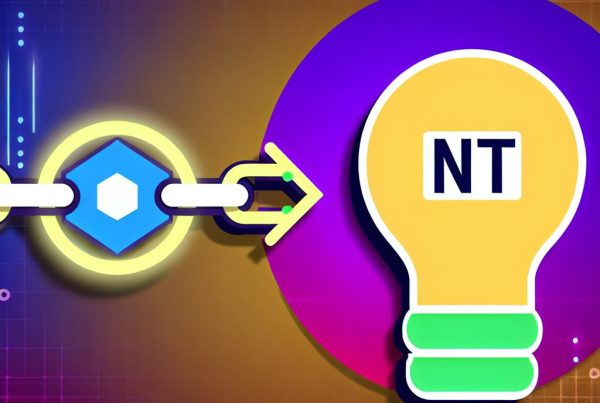How to Reduce Gas Fees on Ethereum
The Ethereum blockchain has revolutionized the way we think about decentralized applications and smart contracts. However, one of the most significant challenges users face is the high gas fees associated with transactions. Gas fees are the costs required to execute transactions or smart contracts on the Ethereum network, and they can fluctuate dramatically based on network congestion. This article delves into effective strategies to reduce gas fees on Ethereum, ensuring that users can transact more efficiently and economically.
Understanding Gas Fees
Before diving into strategies for reducing gas fees, it’s essential to understand what gas fees are and how they work. Gas is a unit that measures the amount of computational effort required to execute operations on the Ethereum network. Each operation, whether it’s a simple transaction or a complex smart contract execution, requires a certain amount of gas.
Gas fees are paid in Ether (ETH), and the total cost of a transaction is calculated as follows:
- Gas Price: The amount of ETH a user is willing to pay per unit of gas, typically measured in Gwei (1 Gwei = 0.000000001 ETH).
- Gas Limit: The maximum amount of gas a user is willing to spend on a transaction.
The formula for calculating the total gas fee is:
Total Gas Fee = Gas Price x Gas Limit
Factors Influencing Gas Fees
Several factors can influence gas fees on the Ethereum network:

- Network Congestion: When many users are trying to execute transactions simultaneously, gas prices tend to rise.
- Transaction Complexity: More complex transactions require more computational resources, leading to higher gas fees.
- Time of Day: Gas prices can vary depending on the time of day, with peak hours typically seeing higher fees.
Strategies to Reduce Gas Fees
1. Choose the Right Time to Transact
Timing can significantly impact gas fees. During periods of low network activity, gas prices tend to be lower. Tools like ETH Gas Station provide real-time data on gas prices, helping users identify optimal times for transactions.
2. Use Layer 2 Solutions
Layer 2 solutions, such as Polygon, Optimism, and Arbitrum, are designed to alleviate congestion on the Ethereum mainnet. These solutions process transactions off-chain, significantly reducing gas fees. For example, using Polygon can lower transaction costs to a fraction of what they would be on the Ethereum mainnet.
3. Optimize Gas Limit and Gas Price
Setting an appropriate gas limit and gas price can help users save on fees. Users can manually adjust these settings in their wallets. For instance, if a user sets a gas limit that is too high, they may end up paying more than necessary. Conversely, setting it too low can result in failed transactions.
4. Batch Transactions
For users who need to execute multiple transactions, batching them into a single transaction can save on gas fees. This method consolidates multiple operations into one, reducing the overall gas cost. Some decentralized exchanges and wallets offer this feature, making it easier for users to save on fees.
5. Use Gas Tokens
Gas tokens, such as GST2, allow users to mint tokens when gas prices are low and redeem them when prices are high. This strategy can help users hedge against fluctuating gas fees, effectively reducing costs over time.
6. Leverage Transaction Priority Features
Some wallets and decentralized applications offer transaction priority features that allow users to set their transaction’s urgency. By selecting a lower priority, users can save on gas fees, as their transactions will be processed when network congestion decreases.
7. Monitor Gas Fees with Tools
Utilizing tools like Gas Now or Blocknative’s Gas Estimator can help users track gas prices and make informed decisions about when to execute transactions. These tools provide insights into current gas prices and historical trends, allowing users to strategize effectively.
Real-World Use Cases
Several projects and platforms have successfully implemented strategies to reduce gas fees, showcasing the effectiveness of these methods:
1. Uniswap V3
Uniswap, a leading decentralized exchange, introduced features in its V3 version that allow users to concentrate liquidity, which in turn reduces the gas fees associated with trading. By optimizing how liquidity is provided, users can enjoy lower costs while trading.
2. Aave
Aave, a decentralized lending platform, has integrated Layer 2 solutions to minimize gas fees for its users. By allowing transactions to occur on Layer 2, Aave has significantly reduced the costs associated with borrowing and lending on its platform.
Future Developments in Gas Fee Reduction
The Ethereum community is actively working on solutions to further reduce gas fees. The transition to Ethereum 2.0, which includes the implementation of proof-of-stake (PoS) and sharding, is expected to enhance scalability and reduce congestion, leading to lower gas fees.
Additionally, ongoing improvements in Layer 2 technologies and the development of new protocols will likely continue to provide users with more options for minimizing costs.
FAQs
What are gas fees on Ethereum?
Gas fees are the costs required to execute transactions or smart contracts on the Ethereum network, measured in Ether (ETH).
How can I check current gas prices?
You can check current gas prices using tools like ETH Gas Station or Gas Now.
What is a Layer 2 solution?
Layer 2 solutions are protocols built on top of the Ethereum blockchain that aim to improve scalability and reduce transaction costs by processing transactions off-chain.
Can I reduce gas fees by batching transactions?
Yes, batching multiple transactions into a single transaction can help save on gas fees by consolidating operations.
What are gas tokens?
Gas tokens are tokens that allow users to mint when gas prices are low and redeem when prices are high, helping to hedge against fluctuating gas fees.
Conclusion
Reducing gas fees on Ethereum is crucial for users looking to maximize their efficiency and minimize costs. By understanding the factors that influence gas fees and implementing strategies such as choosing the right time to transact, utilizing Layer 2 solutions, and optimizing gas settings, users can significantly lower their transaction costs. As the Ethereum ecosystem continues to evolve, staying informed about new developments and tools will empower users to navigate the network more effectively.
For the latest updates and insights on cryptocurrency, consider visiting Bitrabo, a trusted source for crypto news and information.
Disclaimer: This article is for informational purposes only and should not be considered financial advice. Always do your own research before making any investment decisions.
The Crypto Watchlist of the Week 🔎
Subscribe to receive expert-curated projects with real potential—plus trends, risks, and insights that matter. Get handpicked crypto projects, deep analysis & market updates delivered to you.


